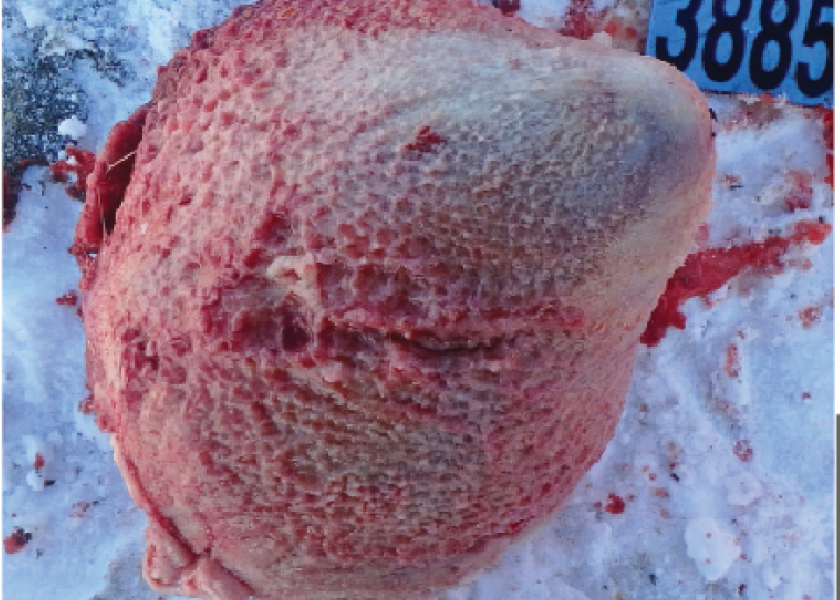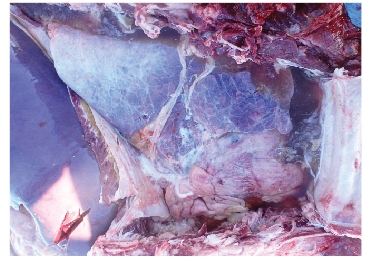Post Mortem Question: What Is The Diagnosis For This Steer Calf?

Answer: The Feedlot Health Management Services team diagnosed this case as “Pericarditis” most likely caused by Histophilus somni, a bacterial pathogen involved in the bovine respiratory disease (BRD) complex. However, the septicemic form of histophilosis can also cause pericarditis, myocarditis, pleuritis, laryngitis, arthritis or infectious thromboembolic meningoencephalitis (ITEME).
Pathogenesis:
H. somni is generally considered a commensal of the nasopharynx that gains access to the bloodstream due to immunosuppression and/or respiratory tract infection. However, recent research might indicate horizontal transmission between animals may also occur.
Predilection for vascular endothelium leads to adherence and thrombus formation followed by ischemia, necrosis and eventually sequestration in specific organs.
Extension of infection from the lungs or pleura is also possible.
Inflammation of the pericardium results in the accumulation of fibrinous fluid between the visceral and parietal pericardium.
Severely effusive cases can result in cardiac tamponade, decreasing cardiac contractility, stroke volume and subsequently cardiac output.
Epidemiology:
Most commonly observed in calves placed in late fall and early winter, but the seasonal effect is confounded by the high number of calf placements in these seasons.
Mortalities caused by H. somni predominately occur between 30 and 90 DOF, but can occur throughout the feeding period.
Ante-Mortem Clinical Signs:
Animals might exhibit non-specific clinical signs such as fever, anorexia and weight loss, depressed mentation and lethargy.
In advanced cases, animals might exhibit clinical signs associated with congestive heart failure including peripheral edema, jugular distension and pulsations, tachypnea and dyspnea.
Animals might exhibit signs of thoracic pain, characterized by abducted elbows, a spontaneous or induced grunt and reluctance to move.
Management:
In populations at high risk of BRD, metaphylaxis with tulathromycin has been shown to reduce H. somni specific mortality.
Vaccination with H. somni bacterin products has been evaluated and has shown mixed results; however, studies have generally used commingled experimental designs with vaccinates and non-vaccinates in the same pens.
In an outbreak scenario, H. somni is generally susceptible to tetracycline antimicrobials. Due to the difficult nature of identifying individual animals affected by H. somni,
mass medication might be warranted.
Post-Mortem Lesions:
Distension of the pericardial sac with fibrinous fluid, possibly accompanied by pleural effusion.
Fibrin could be adhered to the heart as well as pericardial sac.
As the disease progresses to chronic stages, fibrosis occurs.
Lesions attributable to congestive heart failure might also be observed.
Photo Caption: Distension of the pericardial sac and pleural effusion can be appreciated in the open chest view.








